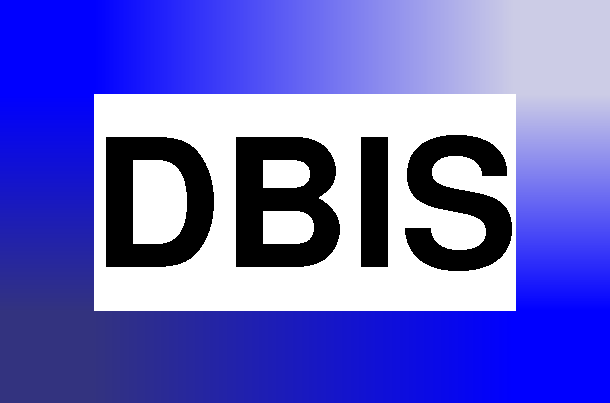Semistructured Data and XML
Summer 2005
Prof. Dr. Wolfgang May
Assistants: Erik Behrends,
Oliver Fritzen
The course will prospectively be given in english (due to english-speaking
master students).
Date and Time: Wednesday 11-13 ct, Thursday 9-11 ct (every 2 weeks).
Lab (Übung): Thursday 9-11 ct (every 2 weeks)
Room: HS 1
(Math.Inst., Bunsenstrasse 3-5, 1.Stock, Südflügel)
6 ECTS credits (Studies in Applied Informatics),
(the before 4+2/9 ECTS module is split into this 3+1/6 ECTS lecture
and a separate
Practical Training XML
that will take place from 19.9.-14.10. 2005 as a block course (6 ECTS)).
Diplom Wirtschaftsinformatik: 4 WiInf-credits,
(elective/"Wahlbereich" Informatik).
The course is transmitted to TU
Clausthal (ELAN project).
At Clausthal, contact
Dietmar Sommerfeld
for administrative issues.
Course Description
One of the most important facts that lead to the overall success of XML
is that the "XML world" combines a lot of already known concepts in an
optimal way for coping with a broad spectrum of requirements.
The course will first review some of these preceding (partially even historic)
concepts (network database model, relational databases, object-oriented
databases) and the integration of data and metadata (SchemaSQL). Then,
the idea of "semistructured data" is introduced by showing early
representatives that helped to shape the XML world (F-Logic, OEM).
In the main part, XML is presented as a data model and a markup-meta-language,
and the current languages of the concepts of the XML world are systematically
investigated and applied: DTD, XPath, XQuery, XSLT, XLink, XML Schema,
SQL/XML, RDF/OWL.
The lecture uses the geographical sample database "Mondial"
in its XML version for illustrations.
For practical exercises, the XML software is installed in the IFI CIP
Pool.
Further information can be found
here.
Dates & Topics
- 13.4.:
Administrativa, Overview, Introductory Presentation "XML".
[Slides 2-on-1]
[Slides 4-on-1]
- 14.4./20.4.:
General Concepts and Notions of the database area.
Slides: Relational Model
- 21./27.4.:
Earlier database models, concepts and extensions:
Network data model, object-oriented databases, SchemaSQL.
Slides: early DB concepts
- 28.4.:
Early concepts of semistructured data:
Object Exchange Model (OEM), F-Logic.
Slides: SSD
- Some references to read about database history (optionally):
- 4.5.:
XML: data model, language, DTDs etc.
Slides: XML basics
- 5.5.: holiday (Himmelfahrt/Ascension Day)
- 11./12.5.: XML: data model, language, DTDs etc. (cont'd)
Exercise sheet 1: XML Start-up
(PostScript |
PDF)
-
Note: there will be no lecture on 17./18.5. (Pfingstwoche)
since Clausthal has Pfingstpause/Whitsun Break and I will
participate in a remote
workshop.
- 25.5.: XPath: navigation and addressing language for XML
Slides: XPath
Exercise sheet 2: XPath
(PostScript |
PDF)
- In case of bugs with eXist, please report
to Erik Behrends, behrends@informatik.uni-goettingen.de.
- 26.5.: Discussion of Exercise sheet 1:
solution [postscript,
pdf]
XPath (Cont'd)
- 1.6.: XPath (Cont'd)
The query language: XQuery
Slides: XQuery
- 2.6.: Discussion of Exercise Sheet 2
solution [postscript,
pdf];
sample XML document fragment for Ex.4
XQuery (Cont'd)
- 8.6., 9.6.: XQuery (Cont'd).
Exercise sheet 3: XQuery
(PostScript |
PDF)
- 15.6.
Discussion of sample solutions for XPath/XQuery Exercises
[postscript,
pdf]
XQuery (Conclusion), Updating XML
- 16.6. The transformation language: XSLT
Slides: XSLT
- 22./23.6. XSLT (Cont'd)
Exercise sheet 4: XSLT
(PostScript |
PDF)
-
Pre-registration to 'Praktikum XML'
(19.9.-14.10.)
:
Register in the list in the SSD/XML lecture or mail to
Erik Behrends.
- Klausuranmeldung im Munopag/Wopag: Ende der Anmeldefrist 13.7.
(Mi) 24:00, Ende der Abmeldefrist 17.7. (So.) 24:00.
Studierende, die nicht im Munopag/Wopag verzeichnet sind (Mathe/Physik, CLZ)
melden sich bitte per Mail direkt an
(may@informatik.uni-goettingen.de).
- 29.6. Global referencing in XML - the linking languages: XPointer and XLink
Slides: XLink
- 30.6. XLink (Cont'd),
XML Schema
Slides: XML Schema
- 6.7.: XML Schema (Cont'd). The lecture will be held in CLZ, transmission to GOE
- 7.7. Discussion of Exercise Sheet 4
solution [postscript,
pdf];
(concerning the discussion whether the "river"-exercise can be solved
using the original Mondial by XSLT: yes, see here)
APIs: DOM/SAX
Slides: DOM/SAX
- 13.7. XML Databases
Slides: XML and Databases
Further information on XML & DB can e.g. be found here:
- 14.7. Semantic Web: RDF/RDFS, OWL
Slides: Semantic Web
Further information on RDF/OWL can e.g. be found here:
Slides: Finale
- All slides of the lecture:
2-on-1,
4-on-1
(except the introductory talk:
2-on-1,
4-on-1)).
(slides can still change slightly - take the version that you printed
once for learning)
- The recorded lectures can be found
here.
Klausur: 19.7.2005, 14-16h (90 Min.),
MN 67 (CLZ: same time, local place)
Hinweise zur Klausurvorbereitung
- Konzepte verstehen und beschreiben können, und wissen, wann man sie
wo anzuwenden hat; Vor- und Nachteile
- "Programmieren" auf Papier mit XML, DTD, XPath, XQuery, sowie den
XSLT-Grundkonstrukten; wichtigste XML Schema-Konstrukte
- keine Syntaxdetails zu XML Schema - hier sollte bekannt sein, was
man machen kann und wie man z.B. einen einfachen simple- oder complex-Type
erstellt (oder z.B. eine Instanz zu einem vorgegebenen Typ
validieren/angeben/korrigieren).
- Grundideen zu DOM/SAX, XLink
verstanden haben und anwenden können
- "History"-Abschnitt: wissen, was die Knackpunkte der jeweiligen Konzepte
waren, und wie sie zur Entwicklung beigetragen haben, bzw. was man davon
prinzipiell in XML&friends wiederfindet.
- Es können auch Aufgaben kommen, wo eine Text-Antwort erwartet wird:
keine Romane mit zuvielen Details schreiben. Kurze, knappe Antwort,
Aufzählung etc ...
- Hier die Klausur vom letzten Jahr zum Durchrechnen:
Klausurergebnis
|
